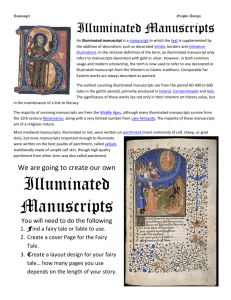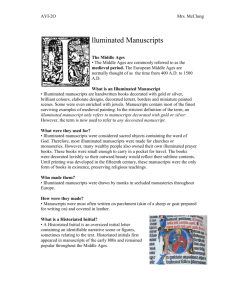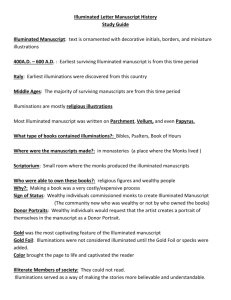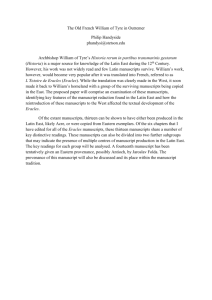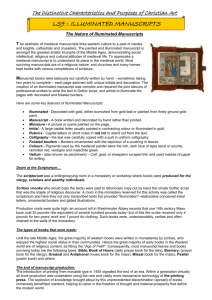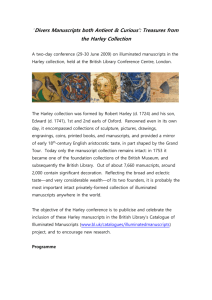The Book of Kells
advertisement
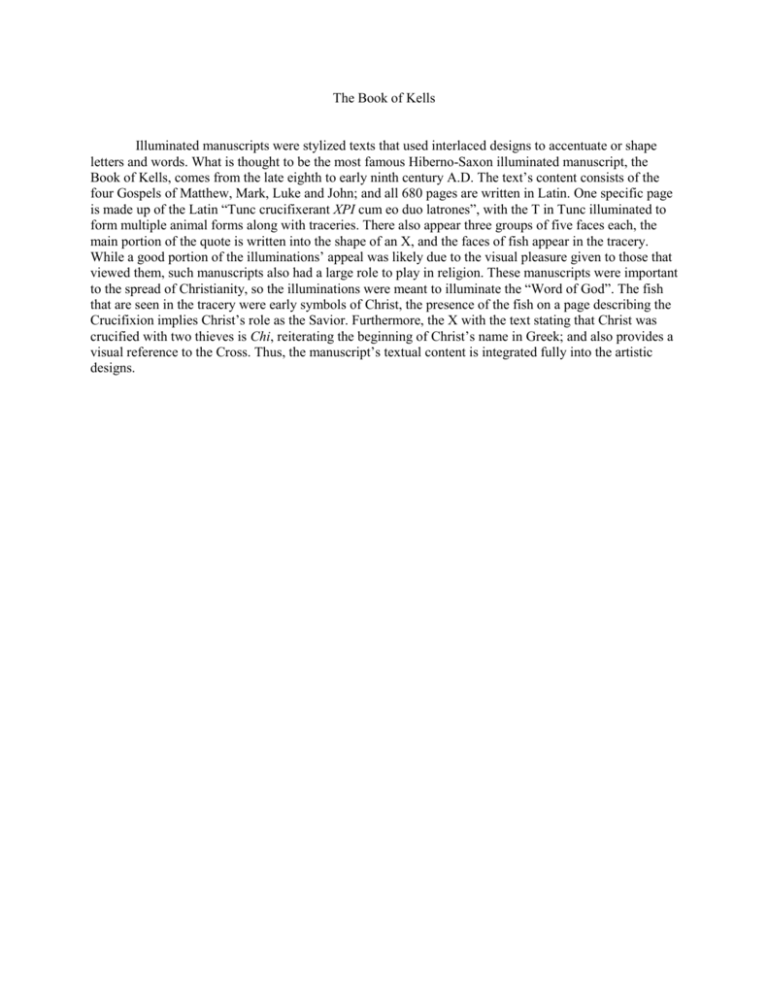
The Book of Kells Illuminated manuscripts were stylized texts that used interlaced designs to accentuate or shape letters and words. What is thought to be the most famous Hiberno-Saxon illuminated manuscript, the Book of Kells, comes from the late eighth to early ninth century A.D. The text’s content consists of the four Gospels of Matthew, Mark, Luke and John; and all 680 pages are written in Latin. One specific page is made up of the Latin “Tunc crucifixerant XPI cum eo duo latrones”, with the T in Tunc illuminated to form multiple animal forms along with traceries. There also appear three groups of five faces each, the main portion of the quote is written into the shape of an X, and the faces of fish appear in the tracery. While a good portion of the illuminations’ appeal was likely due to the visual pleasure given to those that viewed them, such manuscripts also had a large role to play in religion. These manuscripts were important to the spread of Christianity, so the illuminations were meant to illuminate the “Word of God”. The fish that are seen in the tracery were early symbols of Christ, the presence of the fish on a page describing the Crucifixion implies Christ’s role as the Savior. Furthermore, the X with the text stating that Christ was crucified with two thieves is Chi, reiterating the beginning of Christ’s name in Greek; and also provides a visual reference to the Cross. Thus, the manuscript’s textual content is integrated fully into the artistic designs.
